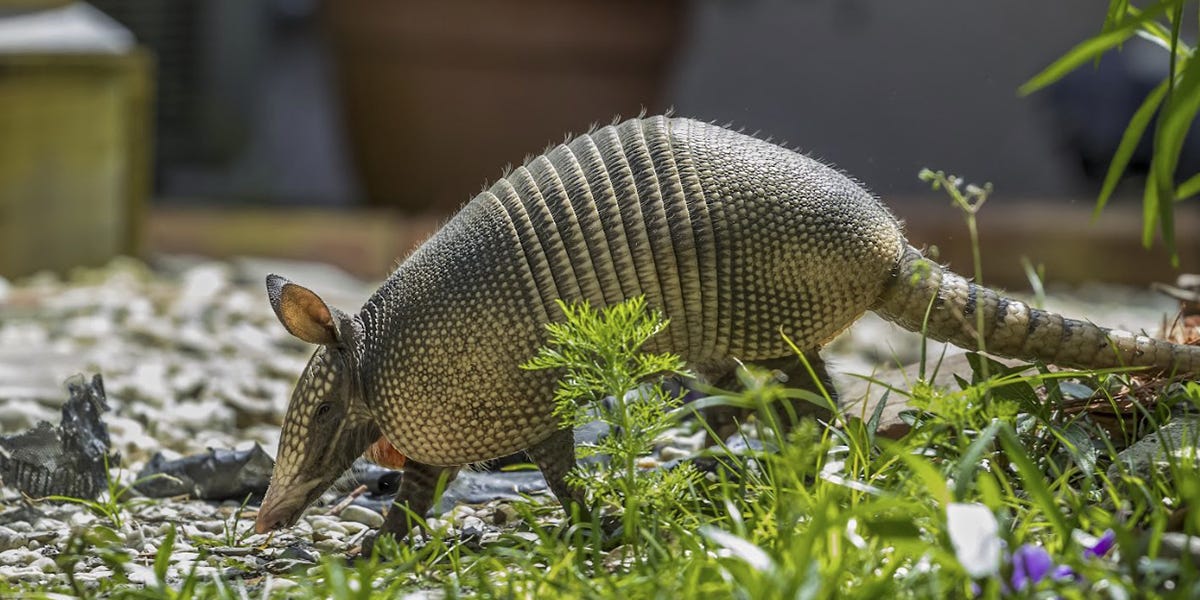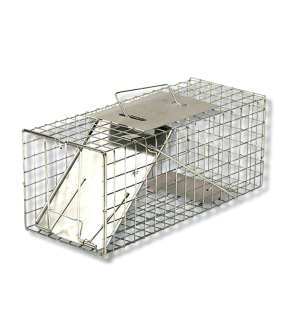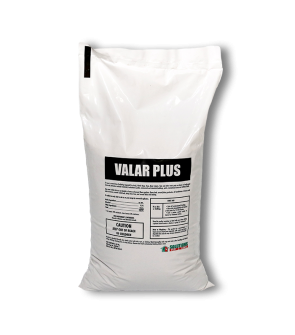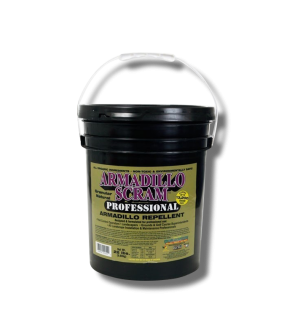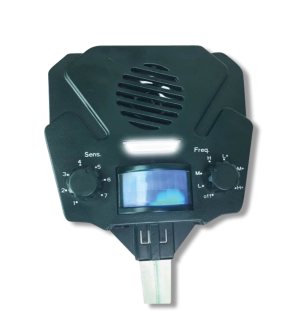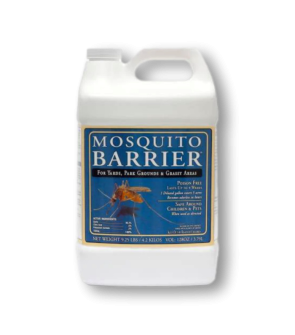Gain access to personalized product screening, the best pricing, rewards, and more!
Most Effective Products
Armadillo Control: How to Get Rid of Armadillos
This page is a general armadillo control guide. Using the products and methods suggested, you will get control of armadillos. Follow this guide and use the recommended products, and we guarantee 100% control over armadillos. Consult your local and state guidelines to see if armadillos are a protected species in your location before applying control. Proceed with caution when applying control, as armadillos can be dangerous.
Armadillos are a rare issue that most homeowners don't run into, but if you live in Southern states like Texas and Alabama, you may encounter an armadillo on occasion. While armadillos aren't aggressive animals that should be feared, their digging habits while searching for insects to eat can damage your yard and garden plants.
Armadillos are small armored mammals that are close cousins of the sloth and anteater. They are habitual wanderers and usually like to nest in the wilderness around dense shrubbery, trees, and rocks. When they are in residential areas, they are known for burrowing holes in yards and around the foundation under slabs.
Armadillos mainly like to eat insects and can wander in parts of the country with milder winters, which is why they appear to be concentrated in the Southern United States. While they aren't dangerously aggressive animals, armadillos are known to carry harmful diseases like leprosy, which they can spread to humans who get too close to them.
If you have encountered an armadillo on your property and are tired of them tearing up your yard, this DIY guide can help. Learn more about armadillos and how to eliminate them from your yard using our expert advice and professional-grade products.
Identification

It is important to first properly identify the pest you are dealing with and confirm that they are an armadillo. Misidentifying an animal can lead to you using ineffective treatment methods and products, which can waste time and money. Here are some armadillo traits to help you with identification:
- The only species of armadillo found in the U.S. is the nine-banded armadillo.
- They range in size between 25 to 48 inches long from the head to the tail.
- They have a long head with a pointed snout and tiny black eyes.
- Their bodies are brownish-gray colored and have a distinct hard armor-textured shell that helps to protect them from predators.
- Armadillos have four short legs with long claws that are ideal for digging and burrowing holes.
Use the description and image above to correctly identify armadillos on your property. If you are unsure, contact us; one of our experts will try to assist you with proper identification.
Inspection

Once you have confirmed that you are dealing with an armadillo, you can inspect where it is active and spending most of its time. This will assist you in your treatment approach and help you determine where to focus your efforts for capturing it or warding it away.
Where To Inspect
Scan around the entire perimeter of your yard, focusing on where most of your garden vegetation is found. You should check where there are shrubs, trees, tall grass, and flowerbeds. You should also check around the perimeter of your home since armadillos like to burrow around the foundations and may create a nest for themselves under a house.
What To Look For
It would be best if you were looking for armadillos themselves, damage from active armadillos, or any burrows or holes they have dug. Spotting an armadillo can be tough because they are nocturnal and like to forage mainly at night. Armadillos also move quickly and zip away to a hiding spot if spotted. The damage they leave behind is usually dug-up turf and torn garden plants during their relentless search for insects to eat.
Treatment
Once you have confirmed where the armadillo is active, it is time to begin treatment. Remember to read all product labels and follow the application instructions on these labels. Wear personal protective equipment to stay safe.
Since it is not ideal to kill an armadillo, our recommendation for controlling an intruding armadillo involves either live trapping with Solutions Humane Live Trap or deterring the Armadillo from the property with Animal Stopper Granular Repellent. You could also indirectly eliminate armadillos by removing their main food source of insects with Valar Plus Bifenthrin Granules.
We recommend the Solutions Live Trap as the best form of control since the results may vary with Animal Stopper Granular Repellent, so it is not guaranteed that this will keep armadillos away.
Step 1: Set up the Solutions Humane Live Animal Trap

The Solutions Humane Live Animal Trap is easy to use, non-lethal, and set up.
To use, bait the trap with something to attract the armadillo, place it in a strategic area where they have been active, and then set the trap by pushing on the door lock and lifting the door plate, then pulling the trigger arm forward until the trigger arm's hook catches the door.
For armadillos, we suggest using a piece of fruit or earthworms.
Place the trap where damage has occurred (such as along a wall or fence line, or if you have identified it, at their den entrances. Position the bait in an area to get the armadillo fully into the trap to get into it so they step on the trigger plate.
After the trap is set, wait a few days (making sure to monitor frequently). If the armadillo is captured, relocate the animal 5 miles away from your property or call animal control to take the armadillo off your hands.
Step 2: Spread Valar Plus Bifenthrin Granules
An indirect method of removing armadillos is to apply Valar Plus Bifenthrin Granules. This great granular insecticide will kill a long list of insects for up to 90 days and can significantly reduce the presence of insects, taking away the armadillo's food source.
Valar Plus Bifenthrin Granules should be applied as a broadcast and perimeter treatment. You will need a granular spreader to use them.
Measure the square footage of your yard to determine how much granules to apply. To find this square footage, you will need to measure the treatment areas' length and width in feet, then multiply them together (length X width = square footage).
Load the appropriate amount to the spreader. The typical application rate is 2.3 lbs. of Valar Plus Bifenthrin Granules per 1,000 sq. ft.
Load your spreader with the appropriate amount of Valar Plus Bifenthrin Granules and apply it around the perimeter of your structure. Next, apply it all over the yard (broadcast), making sure to apply it in mulch areas, landscaping, and at the foot of ornamentals. Finally, the product can be activated by watering the areas treated.
Prevention
After capturing or repelling the intruding armadillo from your property, you will need to enact some preventative measures to keep the pest from returning. Here are a few measures we suggest:
- Cover those burrows. If you find burrows in your garden, get up and fill them. Don’t let them settle on your property because they are looking for food, and within a few days, you could find your garden completely rampaged. Use stones, leaves, and mud to cover the burrows. This would prevent them from digging deeper.
- Install lights. Being nocturnal creatures, armadillos prefer to hunt for food in the dark. Therefore, you could install bright lights in a few areas to scare away the animals.
- Use Animal Stopper Granular Repellent. If you have been coming across Armadillos lately, you can keep them far away with the help of Animal Stopper Granular Repellent. Animal Stopper Granular Repellent is a granular repellent that contains all-natural ingredients that interfere with armadillos' keen sense of smell. When they get a whiff of the granule or taste it, they will be put off and leave the premises. Use a spreader to create a band of the Animal Stopper Granular Repellent around the perimeter of your property.
Key Takeaways
What is an Armadillo?
- Armadillos belong to the same animal family of sloths and anteaters. They enjoy eating insects and are notorious for burrowing holes and tearing up landscapes while hunting for insects.
- Armadillos can be easily identified by their distinct appearance—a grayish brown armor body, long tail, and snout with 4 short legs.
How To Get Rid of Armadillos In Your Yard
- Armadillos are often attracted to a property because there are ample insects to eat and a place to make a burrowing hole to rest.
- We recommend using the Solutions Humane Live Trap to capture intruding Armadillos. Bait the trap with fruit or worms and monitor it carefully until the armadillos are caught.
- You can also indirectly make the Armadillo leave by taking away their food source. Apply a broadcast treatment of Valar Plus Bifenthrin Granules around your yard and activate water to kill the insect population.
Preventing Armadillo Reinvasion
- To prevent armadillos from returning to your yard, modify the environment by covering any holes they previously dug, installing lights at night, or applying Animal Stopper Granular Repellent to create a protective band that will keep armadillos away.






